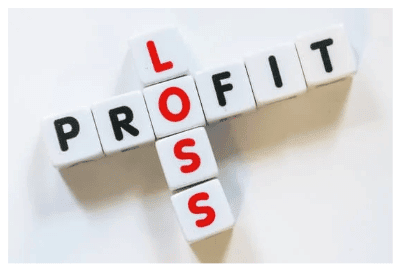Class 1 Exam > Class 1 Notes > Mental Maths > Worksheet: Profit & Loss
Worksheet: Profit & Loss | Mental Maths - Class 1 PDF Download
| Table of contents |

|
| Understanding Profit and Loss |

|
| Identifying Profit and Loss |

|
| Simple Problems |

|
| Fun Activity |

|
Understanding Profit and Loss
1. Circle the correct answer:
- If you buy a toy for ₹50 and sell it for ₹60, you make:
(a) Profit
(b) Loss - If you buy a book for ₹30 and sell it for ₹25, you make:
(a) Profit
(b) Loss
2. Fill in the blanks:
- If you buy a ball for ₹20 and sell it for ₹30, you make a _________ of ₹10.
- If you buy a pencil for ₹10 and sell it for ₹7, you make a _________ of ₹3.

Identifying Profit and Loss
3. Draw a happy face if you make a profit, and a sad face if you make a loss:
- Buying a chocolate for ₹20 and selling it for ₹25
- Buying a pencil for ₹10 and selling it for ₹5
4. Complete the sentence:
- I bought a toy for ₹50 and sold it for ₹70. I made a _________ of ₹20.
- I bought a book for ₹40 and sold it for ₹30. I made a _________ of ₹10.

Simple Problems
5. Solve the following:
- You buy a ball for ₹25 and sell it for ₹30. What is your profit?
Profit = ₹__________ - You buy a notebook for ₹15 and sell it for ₹10. What is your loss?
Loss = ₹__________
6. Tick (√) the correct answer:
- If you buy a toy for ₹60 and sell it for ₹80, your profit is:
(a) ₹10
(b) ₹20
(c) ₹30

Fun Activity
7. Draw a picture of a shop where you sell toys and write the price of the toys you sell.
- Example: Toy A = ₹50, Toy B = ₹60
8. Colour the profit and loss signs:
- Colour the "Profit" sign in green and the "Loss" sign in red.
The document Worksheet: Profit & Loss | Mental Maths - Class 1 is a part of the Class 1 Course Mental Maths.
All you need of Class 1 at this link: Class 1
|
39 videos|158 docs|19 tests
|
FAQs on Worksheet: Profit & Loss - Mental Maths - Class 1
| 1. What is the difference between gross profit and net profit? |  |
Ans. Gross profit is the total revenue minus the cost of goods sold, while net profit is the gross profit minus all other expenses, including operating costs, taxes, and interest.
| 2. How can a business increase its profit margin? |  |
Ans. A business can increase its profit margin by increasing sales revenue, reducing costs, improving operational efficiency, and raising prices strategically.
| 3. What are some common expenses that can impact a company's profit and loss statement? |  |
Ans. Some common expenses that can impact a company's profit and loss statement include salaries and wages, rent, utilities, marketing costs, inventory expenses, and taxes.
| 4. How does depreciation affect a company's profit and loss statement? |  |
Ans. Depreciation is a non-cash expense that reduces a company's reported profits on the income statement. It reflects the gradual decrease in value of a company's assets over time.
| 5. What is the significance of analyzing a company's profit and loss statement? |  |
Ans. Analyzing a company's profit and loss statement helps stakeholders understand the financial health of the business, identify areas of strength and weakness, make informed decisions, and plan for future growth and profitability.
Related Searches
















